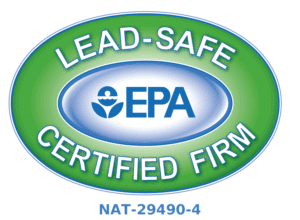Has your older Maine home been a bit drafty lately, or have you noticed an increase in dust throughout your home? Or maybe you’ve realized that your new home is costing you more than you estimated for utility costs, and your heating and cooling equipment are struggling to keep you comfortable. These are all signs that your Maine home is full of air leaks.
Regardless of what is causing you to take notice of the air leaks in your home, you probably want to resolve the issue, and residential air leakage testing can be a great help. Blower door tests are the industry standard when it comes to whole-house air leakage tests, and they’re used to resolve home air leakage rates that are too high for optimum comfort and efficiency. Here is what you need to know about how they work and how you can benefit.
What Is a Blower Door Test and How Does it Work?
The blower door test was invented in Sweden in the ’70s and had shown up in American homes by 1979. The goal of a blower door test is to provide a reading of the total air leakage throughout a building, and this is done by attaching a large fan to an exterior door with a special pressure gauge device attached.
A blower door is temporarily attached to a home using an airtight skirt made of a plastic material, then all other exterior doors and windows must be shut, while interior doors remain open. Once the set-up is complete, your blower door technician will turn the fan on to create a negative pressure inside the home (the fan blows the air out, not in).
After a few adjustments to complete the pressure gauge readings, the blower door test is complete and your blower door technician will be able to assist you in understanding the findings!
Understanding Blower Door Test Measurements
When a blower door fan creates a negative pressure within your home, outside air is pulled into your living space through whatever pathways it can find. With all of your outside windows and doors shut, this only leaves tiny, hard-to-reach, and often invisible air leaks for outside air to travel through. At this point, the pressure gauge is measuring:
-
If your home is airtight enough to reach 50 pascals
-
How many times the air in your home is replaced with outside air (Air Changes per Hour, or ACH)
-
The resulting air leakage in Cubic Feet per Minute (CFM)
-
How much air infiltrates your home naturally, without the blower door
These measurements are used to understand how air moves freely into and out of your home. So, how can an experienced home performance contractor like Evergreen Home Performance use the results of your blower door test?
What Happens Next?
A blower door test is all a part of a greater home diagnostic service, called an energy audit, and the data is used to select the measures needed to increase the overall comfort and efficiency of your living space. Your Evergreen Home Performance Energy Advisor can utilize infrared thermal imaging during the test to help locate the air leakage locations. Then, when your Evergreen technician crew arrives to air seal, they seal them up until your home is as airtight as possible. This is called air sealing.
Air sealing provides you with greater control over your indoor temperatures, and the blower door test data helps determine how much ventilation your home needs to keep it safe and healthy. Usually, existing home ventilation equipment (like range hoods and bathroom fans) can be optimized to do the job.
What’s more, the same infrared imaging can be used to locate areas of poor insulation. Replacing outdated or damaged insulation can increase the overall effectiveness of your home improvement project, and should be completed alongside air sealing.
With proper air sealing and insulation, your Maine home will be:
-
More comfortable
-
Healthier to live in
-
Less expensive to heat and cool
-
Less drafty






